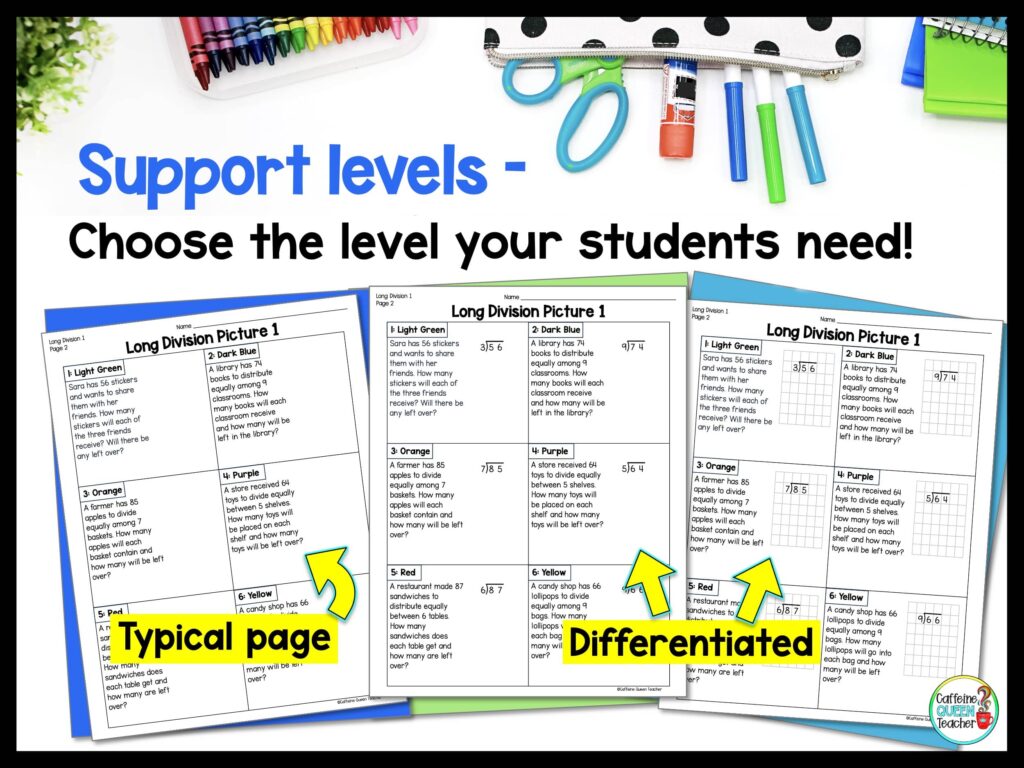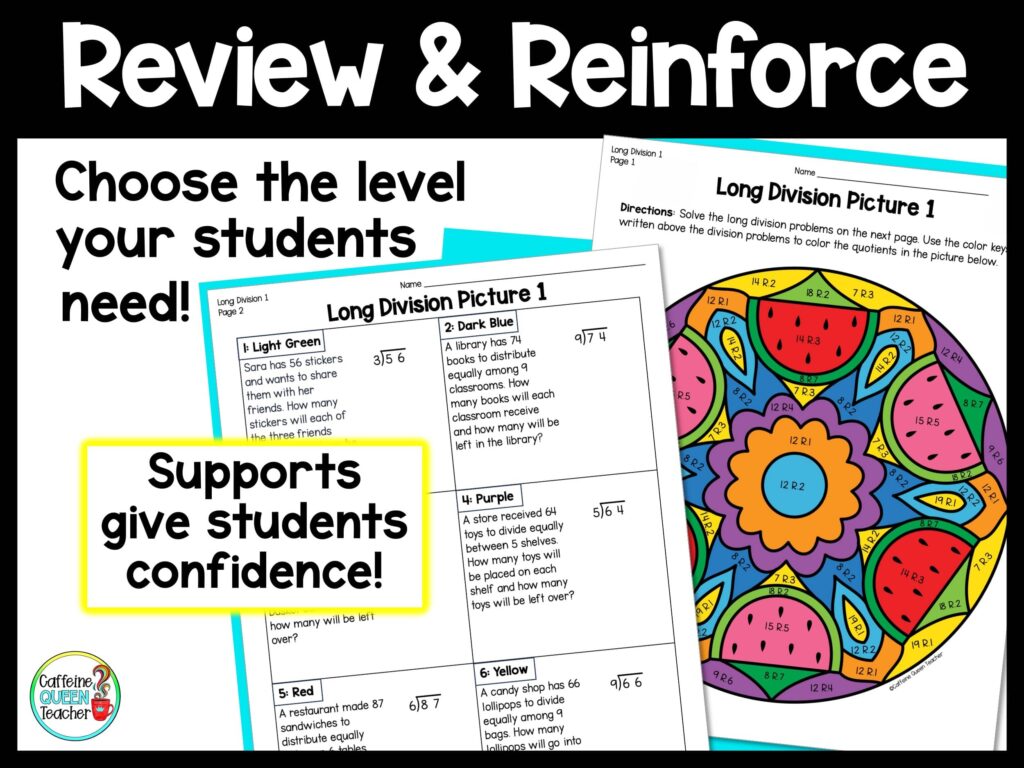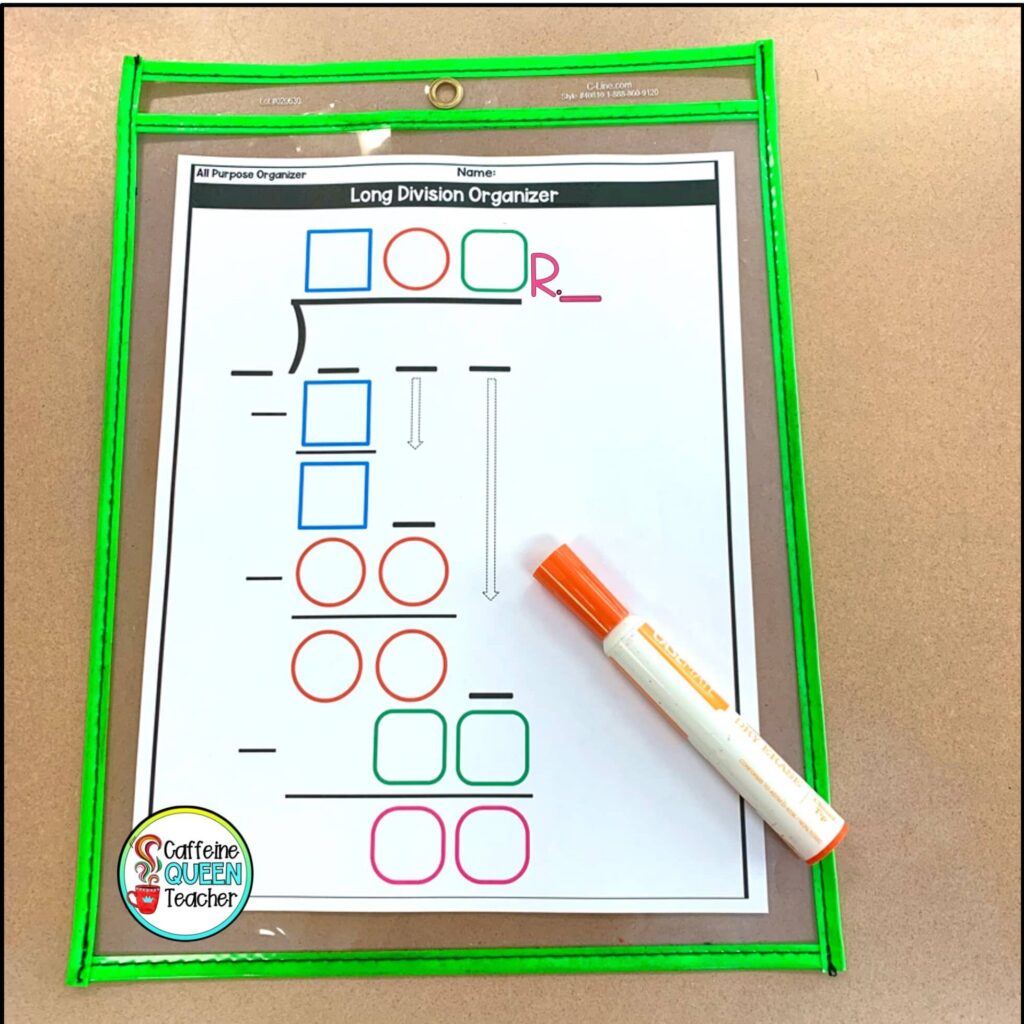Long division is tough for students and teachers. These 5 easy and practical strategies make differentiated long-division instruction less scary and more fun.
Teaching long division can be difficult in a classroom filled with kids who all learn at different paces. Some students may grasp the concept quickly, while others might need more time and extra support.

As teachers, we know we need to differentiate our instruction to meet the needs of every single student. That can feel challenging and overwhelming, but it’s doable.
With the right strategies, you can differentiate and scaffold your instruction while supporting all of your students.
Here are 5 strategies for differentiating long-division:
1. Use Graph Paper Grids
Graph paper grids can be a game-changer when teaching long division. They provide students with a visual aid to keep their digits and place values organized and lined up neatly. You can use your own blank graph paper or grab some pre-made ones from my shop at Teachers Pay Teachers.
2. Offer Differentiated and Varied Practice Sheets
Make the standard algorithm for long division more student-friendly by using a shape and color-based organizer. The graphic organizer provides a visual roadmap guiding students through the problem-solving process. Organizers also keep digits lined up neatly in columns to avoid mistakes. Differentiated practice pages allow teachers to scaffold problems to students’ skill levels.
Check out the Shaped Math long division resources at my Teachers Pay Teachers shop.
3. Small Group Instruction
Small group instruction allows for more individualized support and the opportunity to provide more personalized instruction to students who may require additional support. You can group students based on their abilities and provide them with targeted strategies to support their learning.
4. Provide visual aids in the classroom
In addition to manipulatives, displaying visual aids such as reference posters, anchor charts, or step-by-step guides benefits students who struggle with understanding the concept of long division. These aids can be an essential reference for students and help them remember the steps involved in solving long-division problems.
Small reference posters or bookmarks allow students to work independently and refer back to the visual aids if needed. Check out the student reference posters in my Teachers Pay Teachers shop.
5. Offer enjoyable opportunities for practice
Mastering any skill, including long division, comes down to practice. Unfortunately, long division just isn’t fun. The trick is to make practice fun for students. Try games, color-by-number pages, task cards, puzzles, escape rooms, or mazes. These engaging activities can boost students’ confidence and improve their overall understanding.


Honorable mention – Utilize Technology
Technology, like interactive websites, virtual manipulatives, tutorials, or apps like Mathletics or Prodigy, can engage students and support their understanding of long division. These resources are a fun and interactive way to practice long division, which is especially helpful for students who struggle with attention and focus.

In conclusion, learning long division can be challenging for upper elementary students. However, with targeted strategies and differentiated instruction, all students can master long division.









